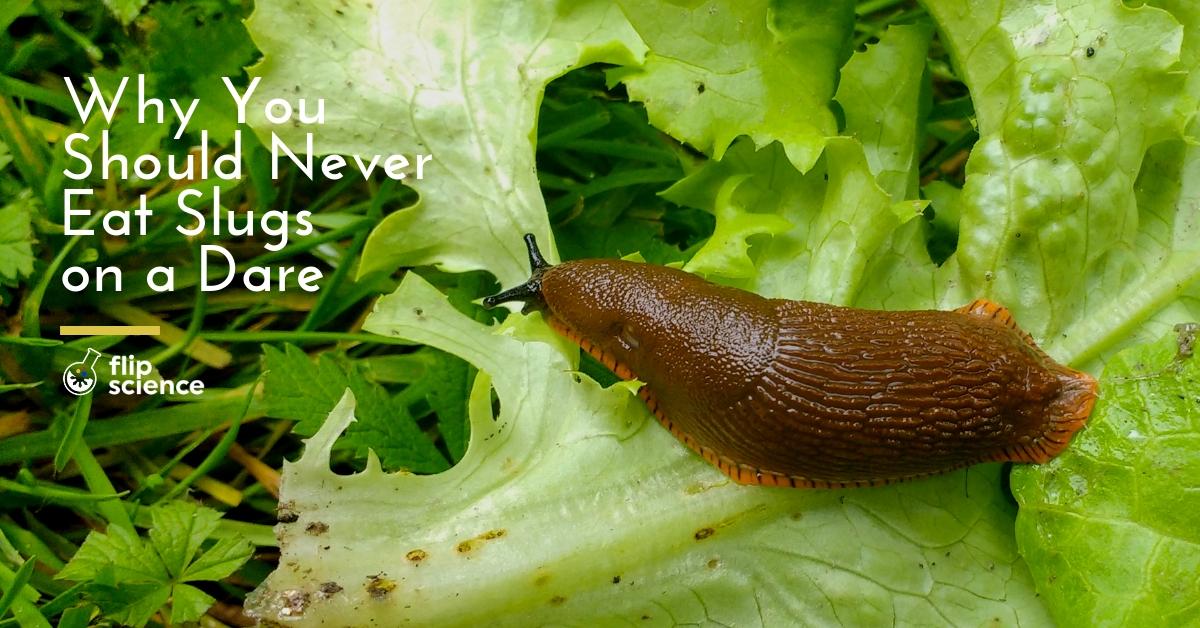Eating raw or undercooked slugs, snails, and other critters – or even poorly prepared vegetables – can get you infected with rat lungworm, a parasite that’s as disgusting and dangerous as it sounds.
At 19 years old, Sam Ballard had a promising future. A student at Barker College in Australia, Sam showed athletic prowess as a rugby player.
Unfortunately, whatever bright future awaited him came to a grinding halt the moment he decided to give in to peer pressure. After a bit of wine and a healthy amount of teasing from his friends, Sam swallowed a slug at a party, perhaps thinking that it was all in the name of good, harmless fun.
Unbeknownst to him, the tiny gastropod was carrying a microscopic parasite — one that would infect his brain, paralyze him from the neck down, send him into a 420-day coma, and eventually cause his demise, eight years later.
Ratting out rat lungworm
Sam had contracted a disease called eosinophilic meningoencephalitis (EM) from the parasite, known as Angiostrongylus cantonensis or rat lungworm.
According to the Centers for Disease Control and Prevention (CDC), infection occurs through the consumption of raw or undercooked snails and slugs carrying the parasite. One may also be unknowingly infected by eating produce (such as lettuce) with infected snails and slugs. Gastropods aren’t the only possible carriers of this parasite, though. You may also get infected by consuming insects, freshwater shrimp, frogs, or crabs carrying the parasite (though more research is required to confirm the latter examples).
Rat lungworms live inside the pulmonary blood vessels in rats’ lungs. The worms exit the rats’ bodies through their feces, which may then infect other small creatures.
Upon entering the human body, the worms travel to the central nervous system, inflamming the meninges (the tri-layer protective membrane around your brain and spinal cord). This causes high levels of eosinophils, a type of disease-fighting white blood cell, in your cerbrospinal fluid. Unfortunately, there is no blood test for this, which means doctors must rely on careful deduction to correctly diagnose EM. EM’s symptoms include headache, neck pain, visual disturbances, and increased sensitivity in any of your senses (hyperesthesias).
Another lungworm-causing parasite, Angiostrongylus costaricensis, travels to the gut. The pain it causes is comparable to appendicitis. Thus, some doctors misdiagnose it, removing the appendix before correctly identifying the culprit. If left in the body, the worms may get stuck in capillaries and cause internal bleeding.
Scientists call unlucky humans who ingest rat lungworms “incidental hosts.” In other words, the worms aren’t actively trying to harm them, and are merely trying to survive within them. (Of course, that doesn’t really make this predicament any better.)
Worming its way across the world
While rat lungworm is relatively uncommon, Sam is far from being the only reported case in recent years.
Some cultures include snails, slugs, and other exotic species in their diet. In 2012, a mother and son in Guangzhou, China contracted rat lungworm after consuming raw centipedes.
Furthermore, a 2014 study reported that specimens of giant African land snail (Achatina fulica) from Davao City tested positive for A. cantonensis. The Japanese brought the snail to the region many years ago as an alternative food source.
Another study, conducted in 2016, examined A. cantonensis infection among rats and snails from Muñoz in Nueva Ecija. Researchers found that nearly a third of the rats sampled had A. cantonensis, indicating a potential health risk in the region.
The first recorded human case of rat lungworm was from Taiwan in 1944. Since then, rat lungworm has spread from Asia and the Caribbean to other parts of the world. Scientists are investigating the possibility that continuous severe climate change and environmental damage may affect the spread of rat lungworm and similar diseases.
Meanwhile, the CDC warns the public against consuming unwashed, raw, or undercooked produce and exotic species. Also, warn your younger family members against eating any creepy-crawlies, whether on a dare or otherwise.
References
- http://www.who.int/tdr/publications/documents/seb_topic3.pdf
- https://newsinfo.inquirer.net/1051049/p2fb-man-paralyzed-at-19-after-eating-slug-from-a-dare-dies-at-29
- https://sunnewsreport.com/health-hazard-understanding-rat-lungworm/
- https://www.hindawi.com/journals/jpr/2016/3085639/
- https://www.inverse.com/article/50552-how-can-eating-a-slug-kill-you
- https://www.medicinenet.com/script/main/art.asp?articlekey=24880
- https://www.ncbi.nlm.nih.gov/pmc/articles/PMC3689478/
- https://www.popsci.com/rat-lungworm-eating-raw-centipedes
- https://www.researchgate.net/publication/284157122_Philippine_Survey_of_Nematode_Parasite_Infection_and_Load_in_the_Giant_African_Snail_Achatina_fulica_indicate_Angiostrongylus_cantonensis_infection_in_Mindanao
- https://www.sciencealert.com/an-australian-man-died-eight-years-after-eating-a-garden-slug-in-a-dare-gone-wrong
- https://www.theatlantic.com/health/archive/2017/04/when-globalization-brings-brain-invading-worms/522153/
Author: Mikael Angelo Francisco
Bitten by the science writing bug, Mikael has years of writing and editorial experience under his belt. As the editor-in-chief of FlipScience, Mikael has sworn to help make science more fun and interesting for geeky readers and casual audiences alike.







